Text
Revealing the Hawk & the Dove
I love poetry, especially poetry that takes me by surprise: a made-up word, a word used in an unusual way, unexpected metaphors and similes. I love language that snaps me to attention, wakes me up. The Revelation to John is termed as Apocalyptic Literature but it is also poetry. It does exactly what good poetry does to me: startles me to feeling fully alive. Eugene Peterson in his book “Reversed Thunder”, states that Revelation is not about more information but rather about immersing us so that we experience the truths we have already been taught. John plunges us into cinematic scenes that explode the senses. I think that’s part of why we find it an overwhelming book - we are on sensory overload. It is also a frightening book. My takeaway picture of God is a God that is fierce, dangerous, angry, vengeful, judging, destructive. I also see God as powerful, creative, and restorative.
There’s a book by Gary Paulsen called “Voyage of the Frog”, about a boy blown out to sea and his fight to survive and find land again. One morning he wakes and finds himself in the midst of an Orca pod. His boat is sailing along and the whales are swimming astride. The boy is awed, afraid, humbled, respectful. He knows these creatures have the strength and ability to crush him and his boat. Yet it is a tranquil moment. The boy is face to face with great power and he is reverential.
“Fear of the Lord is the beginning of wisdom” according to Proverbs 1:7. This picture of the Orcas captures well what sort of fear we should have of God. A true sense of God’s presence, God’s holiness, God’s power should humble us but also make us quake. God has the power to squash us. Yet God chooses to love us.
It’s this mixed-bag that we get in Revelation. The Orcas swim peacefully by the boat. God crashes into the boat and smashes it all to pieces. It’s terrifying. Revelation 6 shows the Lamb opening the 7 seals on the scroll, unleashing bizarre creatures who steal peace and conquer and turn humans against one another. Verse 8, “I looked; and behold there was a pale green horse! Its rider’s name was Death, and Hades accompanied him. Together they were granted authority over one-fourth of the earth to kill with weapons, with famine, with disease, and with wild animals that roamed the earth.” (The Voice translation) All this is loosed by God! By God! It just gets worse and worse.
Then I read an excerpt by Virginia Stem Owens:
“There is a dove in heaven, we know, that descends/ when the skies open, sometimes in fire. But perhaps/ there is also a hawk in heaven that swoops down on/ us with the gift of death to deliver us from our used-/ up past, the past we have neither the courage nor the/ imagination to walk away from.”
In “The Selfish Gene”, Richard Dawkins writes about the hawk and dove theory. Hawks are fighters every time, unto death. Doves avoid harm, to themselves and others. You would think the hawks would pervade, but hawks being hawks would kill one another off, extincting themselves. Dawkins comes to the conclusion that a balance of hawks and doves is necessary, a “stable ratio”.
Revelation shows us that God is hawk and dove. And for good reason. I like Virginia Stem Owens’ take on it: death as gift - purging, cleansing, refining, purifying. Delivering us from what we can’t let go of ourselves.
I don’t know if Revelation was a code-book for John’s time only. Or perhaps a book of basic principles such as worship and overcoming. Or a predictive book, revealing visions of things to come. I don’t know.
How many times have many of us struggled to reconcile the angry God of the Old Testament with the God-is-love of the New Testament. If Revelation is not adding new information but rather plunging us into the experience of what has already been conveyed to us, God is both Testaments at once: terrifying and loving; destructive and restorative; dangerous and creative.
A new Heaven, a new earth. No more tears or sorrow. No more evil. It takes the rather hawkish God to get us back to the dove God. God is hawk and dove. Prying us loose of all that is less than God.
This poetry book, Revelation, is visceral. Most people who read it come away from it shaken, scared, hopeful, triumphant. It provokes. It prods. It demands. It startles. It enlivens.
“Wake up, sleeper, rise from the dead, and Christ will shine on you.” Ephesians 5:14 (New International Version)
2 notes
·
View notes
Video
youtube
What do you want to make today? (Mako Fujimura)
1 note
·
View note
Video
youtube
Song of the Day - In honor of the birth of Makoto Fujimura
https://en.wikipedia.org/wiki/Makoto_Fujimura
Makoto Fujimura - Artist in Residence and Director of the Brehm Center, Fuller Theological Seminary, Pasadena, CA - “On Stewarding”
1 note
·
View note
Text
Pilgrims In Motion
Psalm 84:4 “Happy are the people whose strength is in you! Whose hearts are set on the pilgrim’s way…”
I like the word “pilgrim”. A traveler. A wayfarer. Someone on a journey. Bruce Cockburn sings in his song The Gift that everything is motion and therefore to the motion be true. I love that line! He also says in the song that not even Death can make us static. We keep journeying. Pilgrims are in motion; they refuse to grow stale, refuse boredom, refuse the status quo. Eugene Peterson would have agreed with this. He wrote about the movement of God’s love and how it moves us into new places of creativity, and yet the crazy thing is, that movement can start with loss.
The need to let go of the trapeze bar, hang in the air for what seems like an interminable amount of time, then grab onto the next bar. Having arms so full we can’t receive anything new - we have to let go of all that stuff in order to get something fresh and new. We can feel deprived in these instances - deprived of things, deprived of safety, deprived of the familiar, deprived of the comfortable. And yet we are called to be pilgrims, people in motion. Letting go of the old to make room for the new.
My pastor, Beth Larocca Pitts, preached on Luke’s version of Jesus’ Beatitudes. Luke has weal and woe, blessed are and cursed are. And each of them border on absurd: blessed are the poor and cursed are those who laugh now. How can being poor be blessed? What’s so wrong with laughing? Beth suggested that Luke is showing that all things are in transition, nothing lasts, not the bad nor the good. Impermanence. Things come and things go. Ralph Waldo Emerson wrote about this idea in his essay “Circles”. This too shall pass is the basic premise; the Circle of Life sort of thing. It’s all in motion. It’s up to us, with God’s help, to keep up with it all.
A poem called The Road of Life by Unknown (found in Tim Hansel’s excellent book Holy Sweat) is all about meeting Jesus and inviting him to ride on a tandem bicycle with you. Eventually Jesus suggests that he take the lead and then the real adventures begin - wild rides and gorgeous vistas, taking him places he never would have gone on his own. An adventure. Steven Curtis Chapman sang about this. The Great Adventure, the wild west, setting off in unknown directions, seeing new beauty, life untamed and unpredictable and glorious - a life with God. Motion. Exploration.
Eugene Peterson writes, “The road we travel is the well-traveled road of discipleship. It is not a way of boredom or despair or confusion. It is not a miserable groping, but a way of blessing.” Travelers on the way. Living life to its fullest. Yes, we work and eat and pay bills and sleep, and wake up the next day and do it all over again. But God implores us to not just live for the weekends or long for that next vacation. God wants us to be pilgrims; God wants us to be in motion, every day. To see Life as God sees it. Feeling bored, restless, discontented? It’s time to look to God with fresh eyes so that we can really see the world and our life within it; willing to let go of the comfortable and go where God leads. Willing to risk loss and deprivation in order to bear new Life into our world. We are called to be in motion, to resist being static. We are called to be pilgrims.
0 notes
Text
Death As Prerequisite
A book on my Top 5 list is Wally Lamb’s I Know This Much Is True. Twins - one is schizophrenic and has a break from reality and good sense. The other twin fears the same could happen to him. Enter Dr. Patel, the psychiatrist in charge of the case. She gives the second twin a totem, a statue of Shiva, a god commonly associated with Death. Umm, thanks? She explains that all things must come to an end in order for new things to come. Out of death comes life. She was a very powerful character.
Jesus said, “Very truly I tell you, unless a kernel of wheat falls to the ground and dies, it remains only a single seed. But if it dies, it produces many seeds.”
Paul wrote to the Corinthians, “When you put a seed into the ground, it doesn’t grow into a plant unless it dies first.”
This doesn’t apply to just a single moment of salvation, that moment some experience of coming to faith. That is one turning point, the first in our walk with God. There will be many more such moments. Catastrophes or tragedies or crises - things that set up a dichotomy known as before and after. Clint Eastwood’s movie Hereafter illustrates this so well. It follows the story of 3 separate characters: an American who can communicate with the deceased; an English boy whose twin brother is killed in an accident; a French woman caught in a tsunami and actually dies until she is then revived. Each one is contending with Death, struggling to find Life again. Each one defining their life as before the event and after the event. They almost despair. And no one in their life can understand what they are going through. They are pushed by their experience to seek higher meaning. Does their life have a purpose? Why them? Why did they survive when others did not? Why are they here? People can’t understand asking these questions; it seems pointless to ask such things, futile. Life is what it is, the people say - eat, drink, and be merry, nothing more. But these characters have stared Death in the eyes, soul gazed with it, and it shook them to their core. They are forever changed.
How many times will there be a before and an after in our lives. It could be a sudden turn of events, out of left field. Or it could be a slow drifting, swimming in a riptide, until you find yourself completely out to sea and helpless to make it back to shore. Either way, we find ourselves face to face with Death and loss. It is in those moments that we must trust that Life can come out of that death. That all beginnings spring first from an ending. Whether it is a death outside of ourselves or a death within us, a letting go of what we cling to so fiercely, choose to believe that Life will spring forth. Mount St. Helen erupted, decimating the land all around it. Yet just so much as a year later flowers and grass and trees and wildlife were making a comeback, blossoming out of the ashes into new life. Life cannot be suppressed. It will push and press and bloom. It is a cornerstone of Christian belief - what is termed Resurrection, the ultimate triumphing of Life, defeating Death itself. Cheating the grave. Life everlasting. Easy to believe when everything is going well, the blessings pouring in, harder to trust in when life is falling apart and seems dismal and unmanageable. Life finds a way. Even through depression and hopelessness. Life finds a way. Death is a springboard for Life. Choose to believe it.
0 notes
Photo
Awesome visioning!
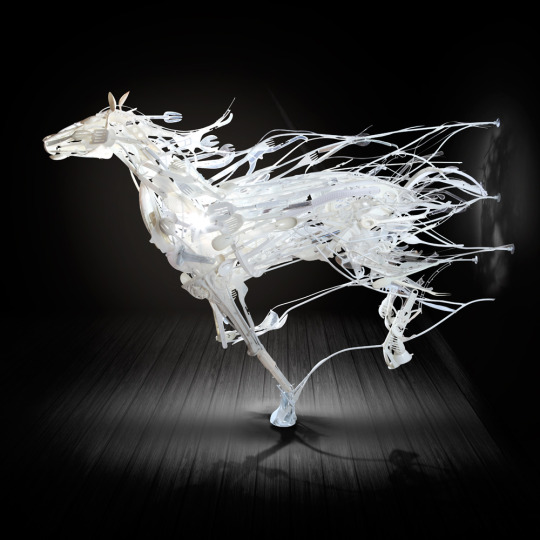

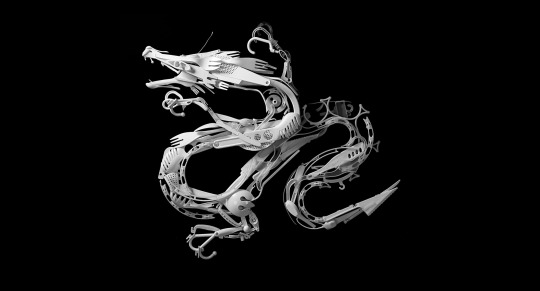
Recycled Animal Art
Driven by a combination of her passion for fitting odd shapes together and a sympathy toward discarded objects, Japanese artist, Sayaka Ganz creates animals from thrift store plastics. She only select objects that have been used and discarded. She believes the best way for artists to help reduce waste is to show how beautiful the materials can be and what can be done with them.
10K notes
·
View notes
Photo
This is great artwork! Love the concept!
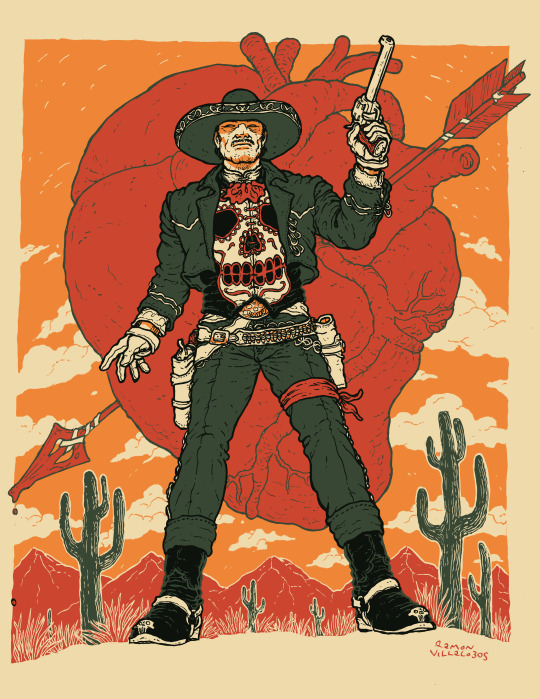
So I did this drawing of a very Mexican Punisher (El Castigador) and I hope somebody likes it because I kinda do. Like, If i didn’t do this, I’d think “That’s pretty nice.” I’d probably like it then reblog it. Anyways it reminds me of hot sauce packaging or something. If you’re interested in a shirt or a print or something, I posted it at Society 6. Thanks.
697 notes
·
View notes
Text
A Passive God?
I continue to confront the issue of "where is God when we suffer". It came up yesterday in conversation with a friend. It came up in the sermon at church today. Where is God when bad things happen? When the bombs explode in Boston or when the fertilizer plant explodes? At a staff meeting this week we looked at Psalm 23, "The Lord is my shepherd, I shall not want..." Someone said in regard to it that it's nice to know God walks with us when we go through our valleys of death. That observation rang hollow for me. It came across as a God who simply sidles up to us during tremendous suffering and says "there, there". It's not very helpful. In Sunday School we are studying the play "Wit", about a professor of John Donne's Holy Sonnets who has cancer and undergoes extreme treatment. Throughout the play, in her worst moments, people ask her "how are you feeling?" when it's plain to see she is feeling god awful. It's an awkward nicety, the question. That's what it feels like to say God walks with us through the dark times- like someone who can plainly see how we are really doing and asks the banal question anyway. I don't want a God like that. Perhaps asking "where' is God when we suffer is the wrong question. God is here, with us. So what. "What is God DOING when we suffer" is for me the more accurate question. In the play "Wit", different people are doing different things in regard to the professor/patient. Vivian is suffering- some treat her formally, some treat her as a test case, some treat her with kindness, and some see into the very depths of her humanity with compassion. As I talked to my friend yesterday, I told her I didn't want an impotent God. I want a God who can DO something. The word that came to me during the sermon today was "passive". I don't want God to be passive. I want God to be active, a god of action. "Wit" shows the need for both action and compassion. That each person does what they can for Vivian to help her and to also see her in the midst of that action, really see her. The hero of the play is Susie, the primary nurse. She does what she can for Vivian in the moment and long range, but the best thing she does for Vivian is see her as a human being who is hurting and deserves kindness. The safe veneer of being a professor of poetry is dropped. Or being a test case for "the full dose" of treatment is let go. She is just Vivian. Susie sees that and acts on it. The 23rd Psalm was sung in church today. I paid attention to the verbs in it: he makes me lie down, he leads me, he restores my soul, you prepare a table, you anoint my head. Even the mention of God's rod and staff ("they comfort me") invokes imagery of action. The psalmist is comforted by God's action on their behalf. Does God act on our behalf? Acts of justice, acts of mercy? I'm choosing to believe God does. I don't believe God is passive. I do not believe God has called me to be passive. I am called to acts of justice, acts of mercy. I don't believe my best actions supersede God's. St. Paul said we see as in a mirror dimly now. My best actions are just a pale reflection of God's actions in this world. I choose to believe God is at work in this world. That when we suffer, God does act on our behalf. I choose to believe the Lord is my Shepherd.
2 notes
·
View notes
Photo
Love Robert Frost. Love the typewriter.

“No tears in the writer, no tears in the reader. No surprise for the writer, no surprise for the reader. For me the initial delight is in the surprise of remembering something I didn’t know I knew. I am in a place, in a situation, as if I had materialized from cloud or risen out of the ground. There is a glad recognition of the long lost and the rest follows. Step by step the wonder of unexpected supply keeps growing. The impressions most useful to my purpose seem always those I was unaware of and so made no note of at the time when taken, and the conclusion is come to that like giants we are always hurling experience ahead of us to pave the future with against the day when we may want to strike a line of purpose across it for somewhere.”
~Robert Frost from The Robert Frost Reader: Poetry and Prose
Photo by Stan Wiechers / Flickr, cc by-sa 2.0
73 notes
·
View notes
Quote
What moves men of genius, or rather what inspires their work, is not new ideas, but their obsession with the idea that what has already been said is still not enough.
Eugene Delacroix, The Artist's Way page 182
0 notes
Photo
A cool art-poetry form.

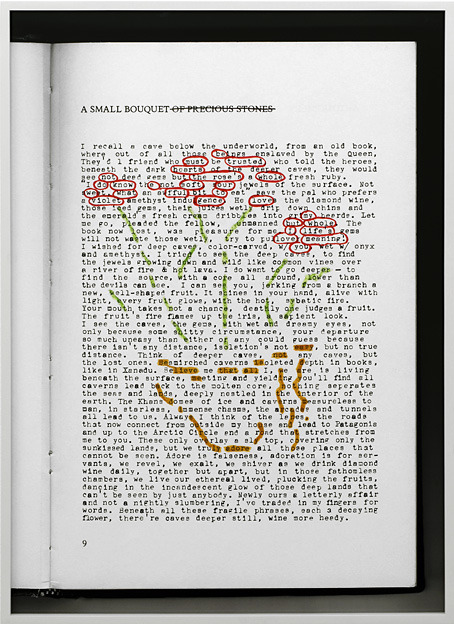
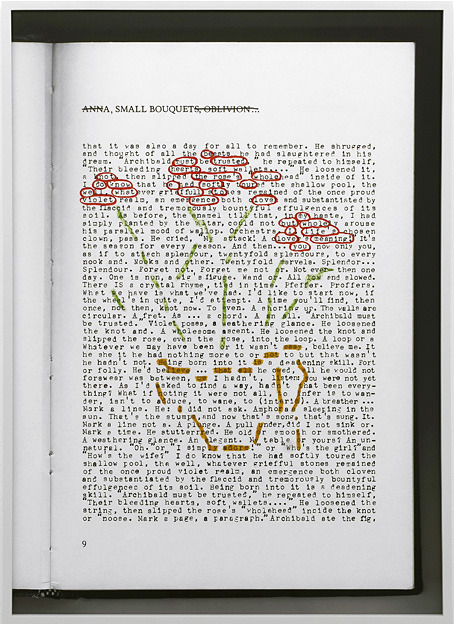



»a small bouquet by frank o’hara« by natalie czech
natalie czech uses calligrams in an attempt to confront and intertwine text and image. she reverses the process established for hidden poems of inscribing a poem into an existing text structure. the source material is not a pre-existing text fragment, but a picture poem. natalie czech invited seven writers - andrew berardini, julien bismuth, maia gianakos, leslie-ann murray, mick peter, nathania rubin and alix rule - to each write a text that contains the same calligram by the american poet, frank o’hara (1926 - 66). the texts were precisely composed around the calligram, so as to embed it in their very fabric, and thus dissolve its iconicity. natalie czech presents these texts as photographs of book pages and re-presents the calligram by marking its component words in the photographs.
1K notes
·
View notes







